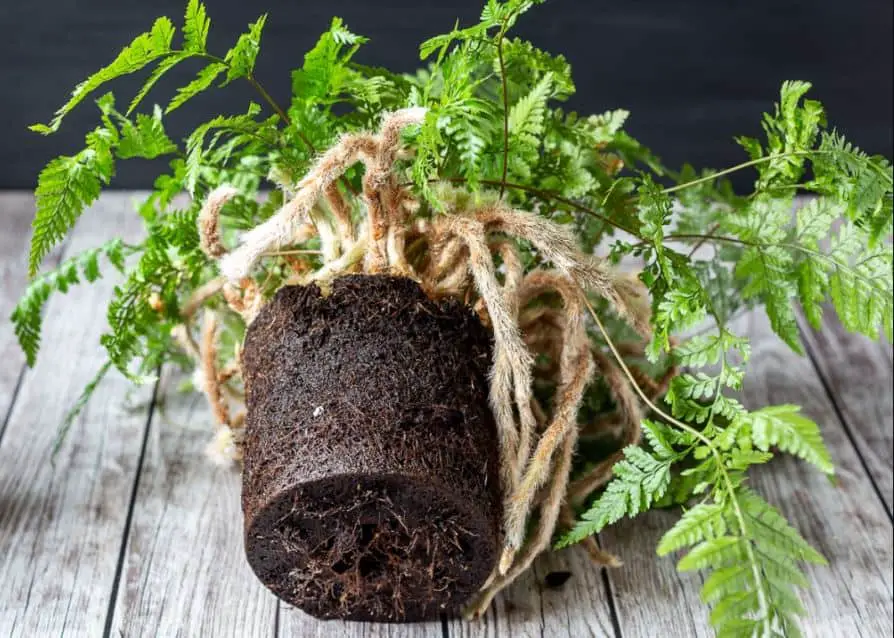The fuzzy rhizomes that sprout above the earth and resemble a rabbit’s foot give the rabbit’s foot fern plant its common name. Rhizomes often extend over the edge of the container, giving the plant an additional dimension. The rhizomes creep through the damp soil, absorbing nutrients and moisture and serving as aesthetic elements.
The velvety rhizomes of a rabbit foot fern houseplant are best seen when grown in a hanging container. The rhizomes may get fairly lengthy and have a spider-like look over time. But, never bury the rhizomes under the ground since this promotes rot.

Rabbit’s Foot Fern Care
Like any indoor plant, caring for a rabbit in foot ferns entails giving enough light, the right amount of moisture and heat, and frequent fertilization. Even with the finest care, you could periodically lose part of the elder fronds. This is typical and does not mean that you did anything wrong.
Rabbit is foot ferns like direct sunshine that is also bright, such that they are found next to an eastern-facing window.
They like daytime temperatures of 70 to 75 degrees F (21 to 24 C) and lower nighttime temperatures.
Water the plants often but softly to keep the soil’s top mildly damp. The surface rhizomes benefit from daily misting to prevent drying out. Watering your rabbit’s foot fern every two weeks with a liquid houseplant fertilizer diluted by half would be best.
About every two years, rabbit foot ferns need repotting; spring is the ideal time. Sand and normal potting soil are mixed to provide the perfect substrate for a rabbit’s foot ferns. Large plants may be divided now, which is a great time.
Specific Need for Rabbit is Foot Fern Plant
The rabbit’s foot fern, scientifically known as Davallia regenesis, differs from its relatives, the deer’s foot fern (D. canariensis) and the squirrel’s foot fern, in that it has lighter, more airy leaves (D. trichomanoides). Plants require regular spraying and the odd rain to prevent drying out since light foliage does not store moisture as effectively as dense foliage.
Chemicals may harm a rabbit’s foot fern plant severely. On the plant, stay away from pesticides and leaf shine agents. A little rain helps keep the fronds clean and healthy while eliminating many pests that eat the foliage. Scented candles, tobacco smoke, and most air pollution also harm the plant.
Growing a rabbit foot fern houseplant is a terrific way to appreciate this distinctive, furry-footed freak, even though it can need a little more upkeep than other plants in the house.


